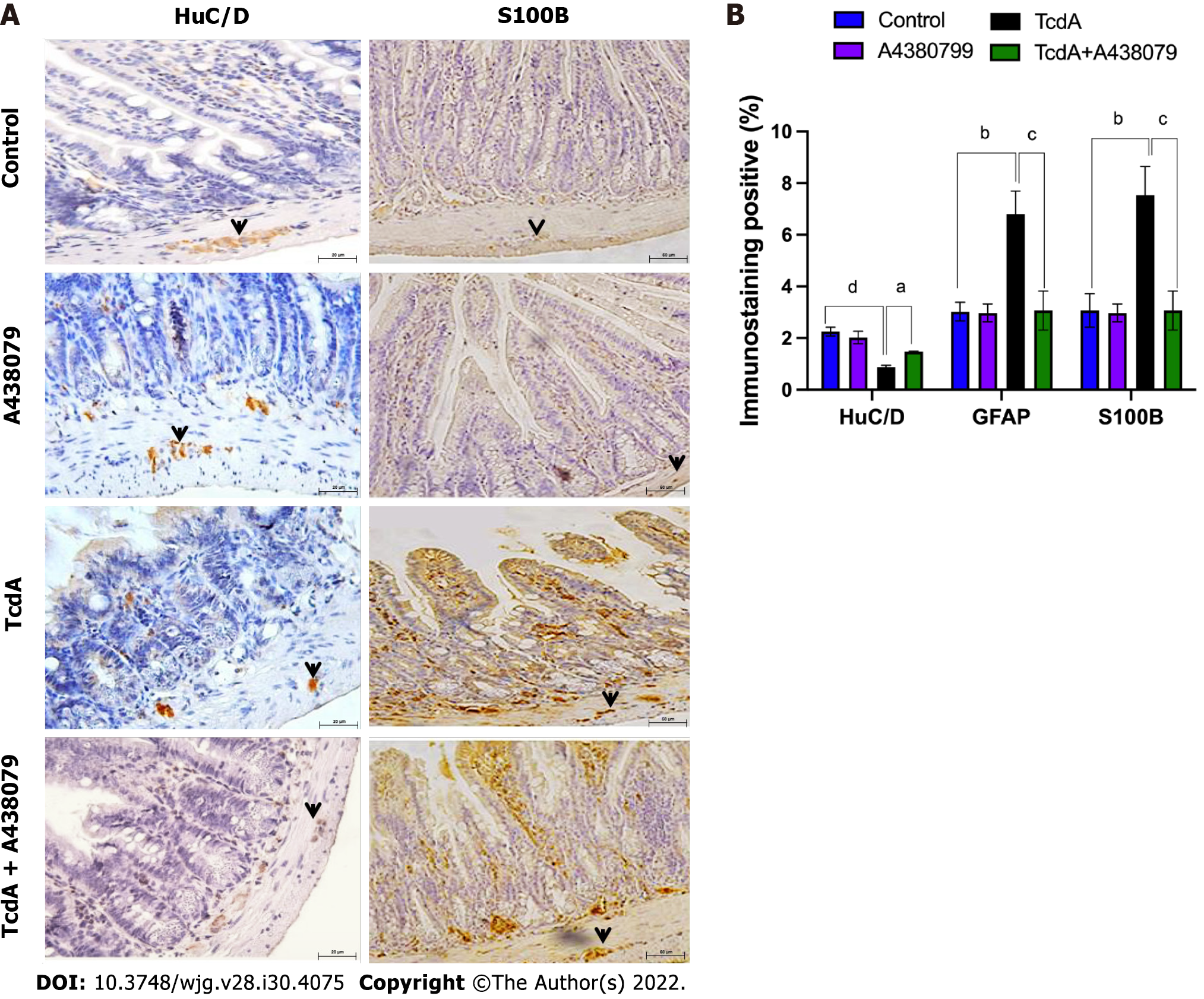Copyright
©The Author(s) 2022.
World J Gastroenterol. Aug 14, 2022; 28(30): 4075-4088
Published online Aug 14, 2022. doi: 10.3748/wjg.v28.i30.4075
Published online Aug 14, 2022. doi: 10.3748/wjg.v28.i30.4075
Figure 5 P2X7 receptor inhibition attenuates Clostridioides difficile toxin A-induced enteric neuron loss and S100B synthesis in mice.
A: Representative immunohistochemical images of the expression of HuC/D (neuronal marker) and S100B (enteric glia marker) in the ileum of TcdA-unchallenged (control and A438079) and challenged (TcdA and TcdA + A438079) mice. Black arrows indicate positive immunostaining. Scale bars, 50 μm; B: Quantification of the percentage (mean ± standard error of the mean) of HuC/D- and S100B-immunopositive areas in the ileum of TcdA-unchallenged (control and A438079) and challenged (TcdA and TcdA + A438079) mice (n = 4 animals per group). ANOVA followed by Tukey’s test was used (aP = 0.04; bP = 0.01; cP < 0.009; dP < 0.0001). GFAP: Glial fibrillary acidic protein.
- Citation: Santos AAQA, Costa DVS, Foschetti DA, Duarte ASG, Martins CS, Soares PMG, Castelucci P, Brito GAC. P2X7 receptor blockade decreases inflammation, apoptosis, and enteric neuron loss during Clostridioides difficile toxin A-induced ileitis in mice. World J Gastroenterol 2022; 28(30): 4075-4088
- URL: https://www.wjgnet.com/1007-9327/full/v28/i30/4075.htm
- DOI: https://dx.doi.org/10.3748/wjg.v28.i30.4075









